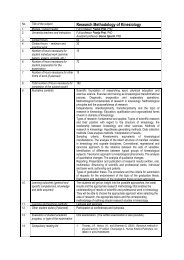How to Do a Perfect Handstand
How to Do a Perfect Handstand
How to Do a Perfect Handstand
Create successful ePaper yourself
Turn your PDF publications into a flip-book with our unique Google optimized e-Paper software.
<strong>How</strong> <strong>to</strong> <strong>Do</strong> a <strong>Perfect</strong> <strong>Handstand</strong><br />
By Amy Van Deusen, About.com Guide<br />
http://gymnastics.about.com/od/skillhow<strong>to</strong>s/ss/handstand.htm<br />
Why Learn a Great <strong>Handstand</strong>?<br />
Learning how <strong>to</strong> do a handstand is one of the most important steps<br />
<strong>to</strong> becoming a good gymnast. Sooner or later, you'll be doing a<br />
handstand on just about every event, and learning a solid one will<br />
help you improve quickly in the sport.<br />
Here's how <strong>to</strong> do -- or perfect -- your handstand.<br />
A Warning: These tips are not meant in any way <strong>to</strong> replace a<br />
knowledgeable coach. About.com and Amy Van Deusen cannot be<br />
held responsible for any accidents in gymnastics – it is an inherently<br />
risky sport and you must be sure <strong>to</strong> take the necessary safety<br />
precautions such as proper progressions, the right matting and the<br />
use of spotters. By reading this article you agree that any advice you follow is at your own<br />
risk.<br />
Find a Wall<br />
Start with a wall, preferably a padded one. Make sure you have plenty<br />
of open space all around you, and a padded surface underneath you.<br />
1
Kick Up<br />
Stand about four <strong>to</strong> five feet away,<br />
facing the wall. Lift your arms straight<br />
up over your head. Lunge forward and<br />
place both hands in front of you on the<br />
floor, shoulder-width apart, about a foot<br />
away from the wall. Keep your fingers<br />
spread out slightly and facing forward.<br />
your arms straight.<br />
Using the momentum from your lunge,<br />
kick one leg up <strong>to</strong>ward the wall, and<br />
then follow it with your other leg. Keep<br />
It doesn't matter which leg you lead with -- you should do what feels most comfortable. If you<br />
aren't able <strong>to</strong> get all the way up in<strong>to</strong> a handstand it can help <strong>to</strong> have a spotter who pulls your<br />
legs up.<br />
Work on Your Body Position<br />
Once you get in<strong>to</strong> a handstand, check your form and positioning.<br />
Try <strong>to</strong> be as straight as possible:<br />
Keep your legs straight and <strong>to</strong>gether, with your <strong>to</strong>es pointed<br />
<strong>to</strong>wards the ceiling.<br />
Tighten your s<strong>to</strong>mach and back so you aren't arching your<br />
back or bending in the hips.<br />
Peek at your hands, but don’t stick your head out.<br />
Push down through your palms so your shoulders and arms<br />
are fully extended, elbows always locked out.<br />
Build Up Your Strength and Balance<br />
Once you can kick up <strong>to</strong> a straight handstand,<br />
practice holding it for a few seconds longer each<br />
time. This will help you strengthen the muscles<br />
you'll need <strong>to</strong> hold it without a wall, and improve<br />
your balance as well.<br />
2
Try it Without the Wall<br />
When you feel ready, attempt your handstand without<br />
using the wall. You may want <strong>to</strong> have a spotter <strong>to</strong> help<br />
you balance. The spotter should hold your legs once<br />
you kick up.<br />
In your first attempts, you might be a little nervous that<br />
you will kick <strong>to</strong>o hard and go right over the <strong>to</strong>p. A<br />
spotter should be able <strong>to</strong> prevent this from happening,<br />
but you will want <strong>to</strong> learn some good ways <strong>to</strong> come out<br />
of your handstand when you don’t have a spotter:<br />
once they learn it.<br />
Roll out: Bend your arms, tuck your head<br />
under (chin <strong>to</strong> your chest), and do a forward<br />
roll out of your handstand.<br />
Pirouette: Twist your shoulders and walk one<br />
hand around. Your body will make a quarter<br />
turn, and you will be able <strong>to</strong> step down without<br />
going over the <strong>to</strong>p. Though this method seems<br />
more complicated, most gymnasts prefer it<br />
<strong>Perfect</strong> Your <strong>Handstand</strong><br />
When you are successfully doing a handstand on your own, have<br />
someone take a look at your body position. Is your body straight like<br />
a pencil? The tighter you are, the easier it will be for you <strong>to</strong> hold a<br />
handstand.<br />
While they're looking, ask them <strong>to</strong> take a picture of you -- after all,<br />
you're doing a handstand!<br />
3





![NASTAVNI_PLAN_I_PROGRAM-_integrirani_studij [2,09 MiB]](https://img.yumpu.com/23830973/1/184x260/nastavni-plan-i-program-integrirani-studij-209-mib.jpg?quality=85)











